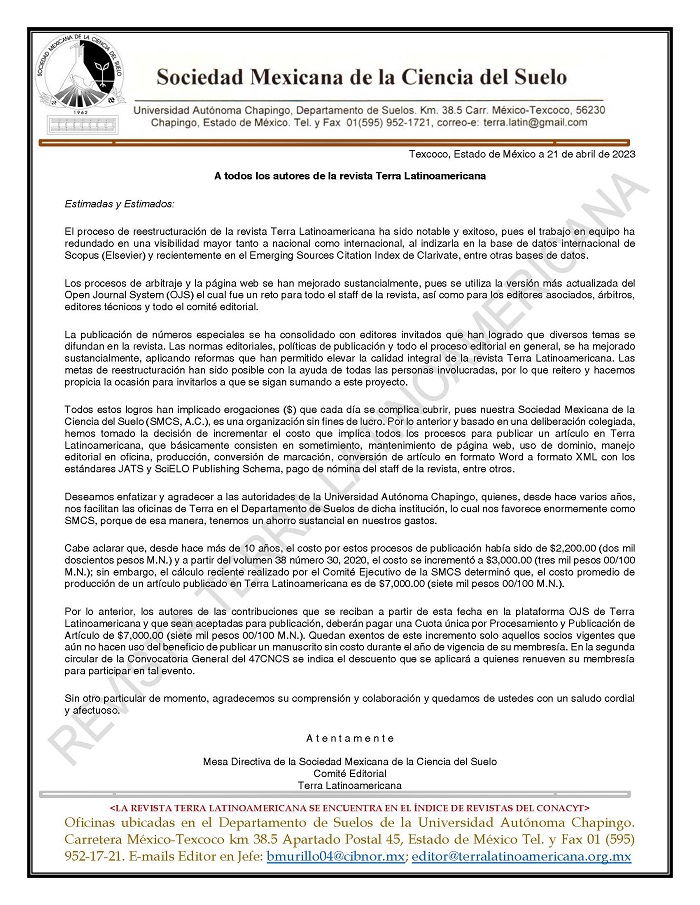Evaluation of Pecan Nutshell (Carya illinoensis [Wangenh.] K. Koch) in the Production of Jalapeño Pepper (Capsicum annuum L.) Seedlings
DOI:
https://doi.org/10.28940/terralatinoamericana.v43i.2027Keywords:
agroindustrial residues, germination, growth, phytotoxicity, semi-compostAbstract
Due to its high salt content and phytotoxic substances, pecan nutshells (Carya illinoensis [Wangenh.] K. Koch) pose an environmental problem when discarded in large quantities. This study aimed to evaluate the use of pecan nutshells in the production of semicomposts for growing jalapeño pepper (Capsicum annuum L.) seedlings. The research consisted of three experiments: in the first, the shells from three shelling facilities were characterized based on pH, electrical conductivity, and germination index. In the second experiment, pecan shells were mixed with horse manure to produce semicompost, which was then used as a substrate for jalapeño seedlings in the third experiment. Statistical differences were observed in the salt concentrations and phytotoxic compound content among the shells studied, which were reflected in the germination index. The results showed that the semicomposts produced did not exhibit differences in the evaluated variables, indicating that the semicomposting process effectively neutralized the variations initially observed in the shells from different processing facilities. It was found that using pecan nutshell semicompost, either alone or mixed with peat, produced seedlings that were statistically comparable to the control treatment (peat) in quality parameters such as slenderness and Dickson’s quality index, in three out of the six treatments studied.
Downloads
Publication Facts
Reviewer profiles N/A
Author statements
- Academic society
- Terra Latinoamericana
- Publisher
- Mexican Society of Soil Science, C.A.

















